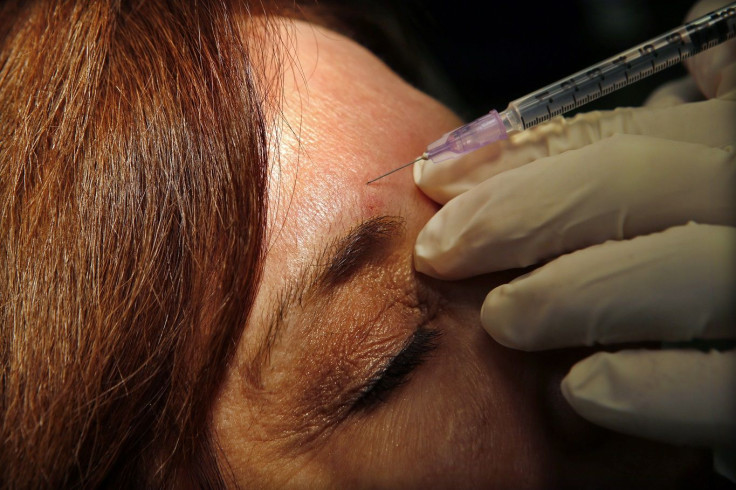Constitutional facial acupuncture, an ancient yet modern anti-ageing treatment

Facial injections have been a staple of the Western beauty industry for more than three decades. These injections address the naturally occurring volume loss in the face, as well as the presence of fine lines and wrinkles as people age. By restoring volume in the face and erasing wrinkles and fine lines, the patient regains a youthful appearance.
In 1981, the Food and Drug Administration in the US approved collagen fillers. Later on, hyaluronic acid, as well as a few other substances, also received approval as fillers. Then in 2002, the FDA approved the use of Botox (botulinum toxin) to erase wrinkles and fine lines.
While these procedures have become widely popular and generate billions of dollars in income for the beauty industry, not everyone is eager to have them. They hesitate mainly because of fear of side effects that can be mild to serious, as in the case of Botox. Furthermore, Botox has been shunned by some celebrities because they ended up with unnatural, “frozen” and expressionless faces.
Filler injections, when done properly by a certified medical professional, are generally safe. Unfortunately, some women are fooled by charlatans who are not only unqualified but use unsafe fillers like silicone. One extreme case was reported in the Daily Mail, about 54-year-old Carol Bryan, who suffered from a botched dermal filler procedure.
Bryan has injected a filler that was mixed with silicone, which is not recommended for use because it tends to migrate, moving away from the original injection site and causing sometimes horrible disfigurements. This is exactly what happened to Bryan. She described herself as looking like an alien.
It took her several corrective surgeries to look normal again. Hers is a cautionary tale about how wrong a filler procedure can go.
A natural option
The hyaluronic acid filler is made from roosters' combs or grown by bacteria in a laboratory. Botox is a poison produced by bacteria. Reputable companies make them safe for humans, but there are still women who consider them “unnatural” substances. For these women, there is a more natural option that has slowly been gaining popularity over the years: facial acupuncture.
Facial acupuncture has been tried and tested for thousands of years. This procedure was first used as part of traditional Chinese acupuncture back in 475 BC. Then called “mei rong” (Chinese medical cosmetology), the treatment was introduced to the West in the 1990s and is now known by the names “facial rejuvenation acupuncture,” “facial acupuncture,” “cosmetic acupuncture” or even “acupuncture facelift.”
In ancient China, facial acupuncture was a luxury reserved for the empress and the imperial concubines. At present, an entire department dedicated to the treatment can be found in most hospitals and universities in China. The use of acupuncture for cosmetic purposes is now known worldwide.
In a report on facial acupuncture, the European Journal of Oriental Medicine refers to facial rejuvenation acupuncture, a virtually painless method to reduce signs of aging. It involves multiple needles put in specific points to balance the fluids in the body. Facial acupuncture also costs less than a Botox or dermal filler treatment.
Modernised approach
As facial acupuncture was introduced to the modern world beyond China, it has become modernised as well. The EJOM says the procedure usually involves a 45 to 90-minute session. The results of the treatment are gradual and subtle. They include softening deep wrinkles, reduction of eye bags and fine lines, firming of jowls, enhanced skin tone, improved energy levels and overall wellbeing.
These results are progressive, and five to 15 treatments are recommended over a course of two and a half months, followed by maintenance treatments every four to six weeks, depending on the desired results. Side effects of facial acupuncture are reportedly rare; usually, these would include slight bruising or spot bleeding at the needle site.
Overall health impacts
There’s another treatment—also acupuncture-based—that provides benefits beyond the merely cosmetic. This treatment is called constitutional facial acupuncture.
Constitutional facial acupuncture diminishes wrinkles, erases fine lines, firms up sagging skin, and restores the skin’s elasticity. Regular treatment, according to some users, gives clearer skin. Its full benefits allegedly not only include restoring youthfulness to the face but allowing the entire body—hence the term constitutional—to achieve good health.
Medical practitioner Dr Mia Hanh, who specialises in traditional Chinese medicine, explains that constitutional facial acupuncture places needles not only on the face but other parts of the body as well. This is to address whatever underlying health issues exist, that contribute to a person’s ageing looks.
For example, in traditional Chinese medicine, wrinkles are caused by exhaustion and malnutrition of the skin because of improper diet, over-indulgence, overexertion, deficiency of the stomach and spleen, and the ageing process. Constitutional facial acupuncture will address all these conditions in order to diminish or eliminate wrinkles.
Another example would be a patient who has a greyish complexion. That may be the result of digestive problems. So during a constitutional facial acupuncture session, Hanh would be place needles on certain pressure points on the legs, to address the digestive condition.
In her practice , Hanh combines present-day medical knowledge with proven traditional methods. She recommends twelve sessions within a twelve-week period to achieve the best results. According to her, while patients may at first seek constitutional facial acupuncture purely for cosmetic benefits, it can be part of a holistic path to better health: achieving youthfulness of mind, body and spirit.





















